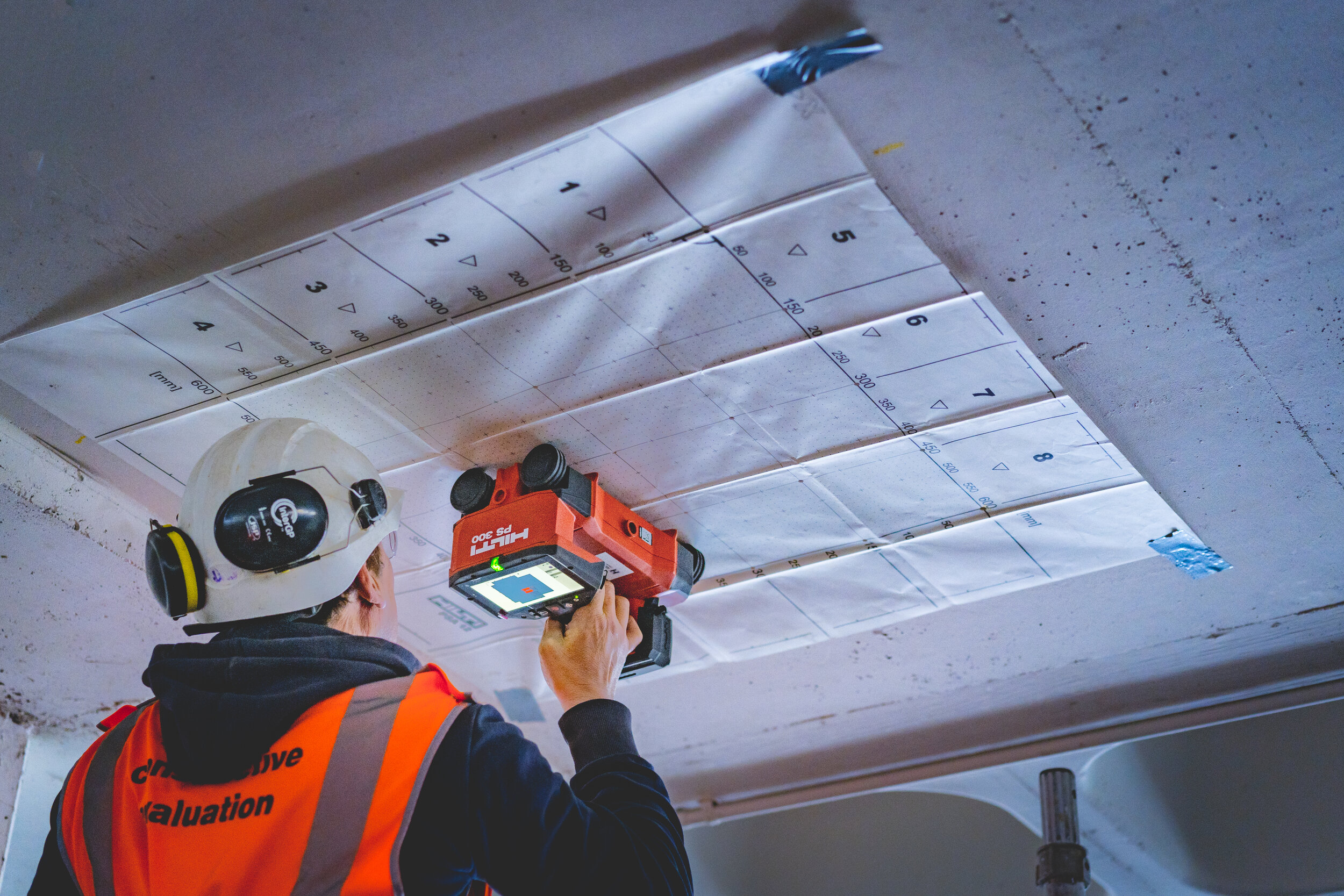RainierGPR Concrete Scanning: Ensuring Safety and Performance in Building
RainierGPR Concrete Scanning: Ensuring Safety and Performance in Building
Blog Article
Checking Out the Secret Benefits of Concrete Scanning in Building Projects
In the realm of modern construction methods, the utilization of concrete scanning modern technology has emerged as a critical device for ensuring project performance and structural honesty. From improving security measures to precisely finding utilities concealed beneath the surface area, the benefits of concrete scanning are diverse. RainierGPR Concrete Scanning.
Enhanced Precaution
Making use of innovative concrete scanning technology improves security measures on building sites by providing accurate discovery of prospective hazards concealed below the surface. This technology enables building teams to determine rebar, channels, post-tension wires, and various other obstructions before excavation or drilling, substantially minimizing the threat of mishaps. By identifying these aspects specifically, employees can prevent destructive critical architectural parts, thus protecting against injuries, hold-ups, and costly repair work.
Furthermore, concrete scanning plays a crucial duty in ensuring the honesty of existing structures during expansions or improvements. By spotting weaknesses, voids, or degeneration within concrete elements, engineers can deal with these concerns proactively, improving the general security and durability of the structure. This positive technique not only minimizes the threat of architectural failings however additionally decreases the capacity for crashes brought on by unforeseen architectural shortages.
Essentially, the execution of concrete scanning technology serves as an aggressive safety action that safeguards both construction workers and the architectural stability of buildings, eventually adding to the general success and efficiency of building jobs. - RainierGPR Concrete Scanning
Accurate Detection of Utilities
Concrete scanning innovation assists in accurate recognition of below ground utilities, improving building website safety and security and performance. Accurate discovery of utilities is critical in construction jobs to stop expensive problems, task hold-ups, and most notably, guarantee the safety and security of employees and the public. By using sophisticated scanning modern technologies such as ground-penetrating radar (GPR) and electromagnetic induction, building teams can map out the area of hidden pipes, cable televisions, and other utilities with high levels of accuracy.

Time and Price Efficiency

Concrete scanning innovation makes it possible for building and construction teams to precisely find rebar, post-tension wires, and other ingrained objects within concrete frameworks. This accurate information helps in avoiding pricey blunders such as unintended damage to important components during exploration, cutting, or coring activities. In addition, by determining possible hazards in advance, the need for costly repairs or rework as a result of problems can be minimized, bring about set you back financial savings for the task.

Furthermore, the capability to swiftly and accurately identify utilities underneath the surface area without triggering any type of damages Continue not only saves time but likewise prevents pricey disruptions to existing infrastructure. On the whole, the moment and cost efficiency benefits of concrete scanning make it an invaluable tool for enhancing building and construction task management and implementation.
Preservation of Architectural Stability
Maintaining the architectural stability of buildings and infrastructure is critical in making certain long-term security and safety and security. Concrete scanning plays a critical function in this preservation procedure by enabling building and construction specialists to recognize possible threats to the structural integrity of a structure or facilities before they rise into major concerns. Through the use of innovative scanning innovations such as ground-penetrating radar (GPR) and electromagnetic induction, building teams can non-invasively analyze the condition of concrete structures, find rebar, post-tension cables, and various other embedded aspects, and identify any type of spaces, cracks, or damage within the concrete.
Improved Job Preparation
In order to guarantee the effective execution of building and construction tasks, meticulous attention to detail and detailed preparation are crucial parts that stem from a comprehensive understanding of the structural problems recognized with concrete scanning. Eventually, incorporating concrete scanning right into the task preparation stage enhances coordination among team members, promotes positive analytical, and contributes to the successful distribution of construction jobs within budget plan and timetable constraints.
Conclusion
To conclude, concrete scanning supplies many advantages in building jobs. By enhancing safety and security procedures, properly identifying utilities, enhancing time and cost efficiency, maintaining structural integrity, and assisting in task preparation, concrete scanning shows to be an important device for effective job implementation. Its capacity to reduce dangers, boost performance, and make certain project honesty makes it an important asset for construction specialists.
In the world of modern-day building practices, the utilization of concrete scanning technology has actually arised as a crucial tool for making certain job effectiveness and architectural honesty.Concrete scanning modern technology allows building teams to properly find rebar, post-tension cables, and various other ingrained objects within concrete structures. Via the usage of innovative scanning technologies such as ground-penetrating radar (GPR) and electro-magnetic induction, building teams can non-invasively examine the problem of concrete structures, situate rebar, post-tension cable from this source televisions, and anchor various other ingrained aspects, and determine any spaces, cracks, or wear and tear within the concrete.
In order to ensure the successful execution of building jobs, precise focus to detail and complete planning are necessary parts that stem from a comprehensive understanding of the architectural problems identified via concrete scanning. Ultimately, including concrete scanning right into the job preparation phase improves control among team participants, cultivates positive analytic, and adds to the successful delivery of building and construction jobs within spending plan and timetable restraints.
Report this page